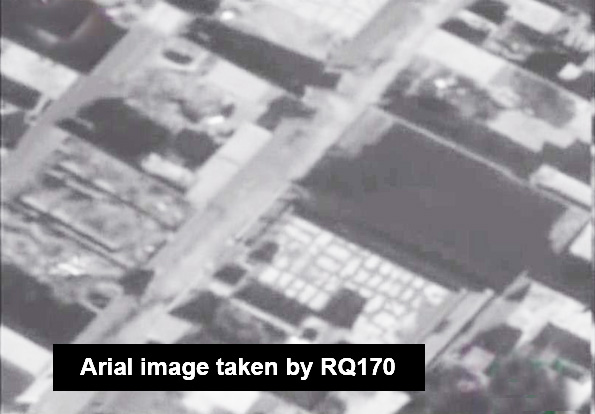[youtube]http://www.youtube.com/watch?v=BOrEADlkZfU[/youtube]
In the ongoing saga of whether or not Iran hacked our RQ-170 Sentinel drone to down it in December of 2011, Marcy has asked many questions. More recently, Iran announced last December that they had decoded all of the data from that drone and from the less sophisticated ScanEagle they had just claimed to have captured, which prompted more questions on the RQ-170’s mission before it came down. Today, Iran is releasing video and stills that it claims to have come from the decrypted imagery carried on the RQ-170.
Here is PressTV’s description of the video:
Iran has for the first time released decoded video recordings obtained from a US RQ-170 Sentinel stealth drone downed and captured by the Islamic Republic in December 2011.
The recordings have been made by the drone’s underbelly camera, and include views from the area surrounding the Kandahar base as the drone is about to land.
So what kind of camera is in the underbelly of an RQ-170? The website airforce-technology.com has a profile of the RQ-170 that includes these snippets:
Flying at an altitude of 50,000ft, the RQ-170 can offer its operators with real time intelligence data by executing surveillance and reconnaissance operations over a large area.
/snip/
An electro-optic camera was incorporated beneath the front fuselage section to seize the real time imagery or videos of the battlefield it is surveying.
Okay, then. What are the capabilities of an electro-optic camera? Here is NASA on that question, on a web page that includes a photo of what looks like the nose of a different type of drone:
The Electro-Optic Camera (EOC) System is an experimental sensor under development by the High Altitude Missions Branch at NASA Ames Research Center. The system captures high resolution digitized images from a solid-state array and stores the imagery on magnetic tape. The EOC will acquire imagery along a twelve mile (20 km) swath width at pixel resolution of thirty-two feet (10 m) in three pre-selectable channels of data over a spectral range of 400 to 900 microns. The camera also tilts fore and aft automatically for bi-directional reflectance measurements and will be equipped with a rotating polarizer.
An electro-optic camera can fly at 50,000 feet with a resolution of 32 feet at ground level. And yet, we see this in one of the stills Mehr News put up:

There simply is no way that the video and stills Iran has released have the quality that an electro-optic camera would produce even though Iran claims their images came from the underbelly camera and the available literature says that camera should be an elecro-optic one. I’m no expert in encryption and decryption of images, so unless this low image quality is a strange result of only partial success in the decryption process, I think we have to call bullshit on Iran’s claims here. [It appears they also could use some coaching on the proper spelling of “aerial”.] The only other explanation would be if a second, lower resolution camera also is present as a backup to the electro-optic system, but there is no way this could be the imagery that the US would be collecting for intelligence gathering purposes.
Update: It seems that the New York Times and experts they cite differ with me (as does PJ Evans in comments below) on the authenticity of the imagery released by Iran.
Update 2: This article suggests the latest sensors have much better resolution than the 10 meters at 50,000 feet number quoted above. It cites six inches at 15,000 feet. And with the RQ-170 being a newly developed drone, one would expect it to have the best available imaging.

